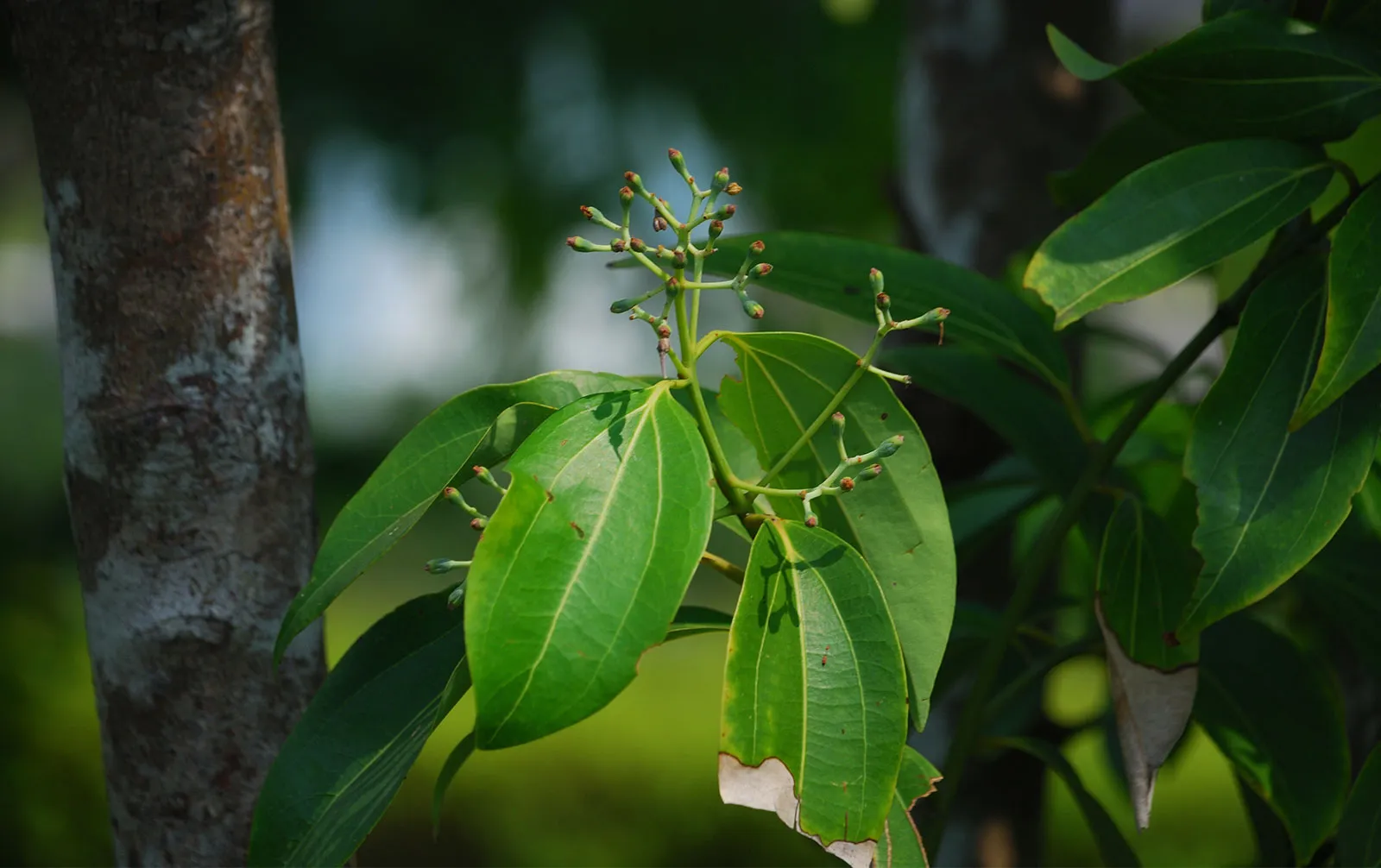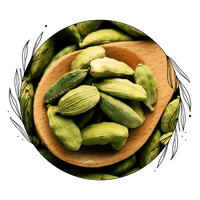Ceylon Spice Chronicles – From Ancient Harvests to Global Kitchens

The Long, Fascinating History of Ceylon Spices

Imagine a small, lush island surrounded by warm ocean waters, where spice trees and vines have grown for thousands of years. This is Sri Lanka, once known as Ceylon, and it has a long and colorful history as a center for some of the world’s finest spices. Going back more than 2,000 years, travelers from faraway lands sailed across rough seas to reach this island because they knew that here, they would find cinnamon, cardamom, and pepper of extraordinary quality. Ancient merchants from Arabia, Persia, and Southeast Asia arrived with ships filled with silks and gems, hoping to trade for precious spices that were worth more than gold. The unique flavor and aroma of these spices were praised in ancient Greek and Roman texts, and their fame spread across continents. Over time, many different people local kings, foreign merchants, and European explorers competed for control of these spices, each hoping to share in the wealth and mystery that Ceylon’s spices offered.
Imagine a small, lush island surrounded by warm ocean waters, where spice trees and vines have grown for thousands of years. This is Sri Lanka, once known as Ceylon, and it has a long and colorful history as a center for some of the world’s finest spices. Going back more than 2,000 years, travelers from faraway lands sailed across rough seas to reach this island because they knew that here, they would find cinnamon, cardamom, and pepper of extraordinary quality.
Ancient merchants from Arabia, Persia, and Southeast Asia arrived with ships filled with silks and gems, hoping to trade for precious spices that were worth more than gold. The unique flavor and aroma of these spices were praised in ancient Greek and Roman texts, and their fame spread across continents. Over time, many different people local kings, foreign merchants, and European explorers competed for control of these spices, each hoping to share in the wealth and mystery that Ceylon’s spices offered.
When European explorers arrived in Ceylon in the 16th century, they saw great opportunity. The Portuguese were the first European power to take control of the spice trade, and they were quickly followed by the Dutch and later the British. These colonial empires knew that controlling Ceylon’s spices could bring them immense riches. They built forts, made treaties, and sometimes even fought battles to secure the precious cinnamon plantations and other spice crops. Each new ruler introduced different ways of farming and processing, improving methods for drying, grading, and shipping the spices. Over the centuries, this constant exchange of ideas and techniques improved the quality of the spices and helped make them famous around the world. Today, we look back at this time with mixed feelings, on one hand, it brought global recognition to Ceylon’s spices, and on the other hand, it involved a great deal of struggle for the local people who grew them.
When European explorers arrived in Ceylon in the 16th century, they saw great opportunity. The Portuguese were the first European power to take control of the spice trade, and they were quickly followed by the Dutch and later the British. These colonial empires knew that controlling Ceylon’s spices could bring them immense riches. They built forts, made treaties, and sometimes even fought battles to secure the precious cinnamon plantations and other spice crops.

Each new ruler introduced different ways of farming and processing, improving methods for drying, grading, and shipping the spices. Over the centuries, this constant exchange of ideas and techniques improved the quality of the spices and helped make them famous around the world. Today, we look back at this time with mixed feelings, on one hand, it brought global recognition to Ceylon’s spices, and on the other hand, it involved a great deal of struggle for the local people who grew them.
After Sri Lanka gained independence in 1948, local farmers continued to grow these special spices with pride and tradition. Today, the island blends old methods with modern farming science to keep the quality high. For example, cinnamon is still carefully peeled by hand to produce those delicate, curly sticks, while pepper, cardamom, and cloves are dried with care to keep their amazing flavors locked inside. Chefs around the world honor Ceylon spices for their unique qualities, and modern buyers appreciate the purity and sustainability of these products. It is no surprise that these spices remain highly valued, not only for their taste but also for their deep cultural and historical significance. By understanding their rich past, we gain an even greater appreciation for every spoonful of cinnamon in a dessert or every pinch of pepper that makes a dish sing. The story of Ceylon spices is truly a story of human history and global culture.
What Makes Ceylon Spices So Special?

Ceylon spices are different from those grown anywhere else in the world. This is because of the island’s unique environment: warm, tropical sunshine, gentle ocean breezes, and fertile, mineral-rich soil. All of these natural gifts help create spices that are milder, sweeter, and more complex in flavor. Take Ceylon cinnamon, for example. Unlike the common cassia cinnamon you might find in many shops, Ceylon cinnamon has a delicate sweetness and a subtle aroma that does not overpower other ingredients. The same is true for Ceylon’s black pepper, which has a fruity, floral hint, and cardamom, which brings a bright, almost citrusy note. Farmers and producers use gentle, traditional methods like careful hand-harvesting and slow drying that protect the natural oils and fragrances of the spices. This careful approach ensures that every piece of cinnamon bark, every peppercorn, and every cardamom pod delivers a taste experience that is pure, full, and impossible to copy elsewhere.
Ceylon spices are different from those grown anywhere else in the world. This is because of the island’s unique environment: warm, tropical sunshine, gentle ocean breezes, and fertile, mineral-rich soil. All of these natural gifts help create spices that are milder, sweeter, and more complex in flavor. Take Ceylon cinnamon, for example. Unlike the common cassia cinnamon you might find in many shops, Ceylon cinnamon has a delicate sweetness and a subtle aroma that does not overpower other ingredients.
The same is true for Ceylon’s black pepper, which has a fruity, floral hint, and cardamom, which brings a bright, almost citrusy note. Farmers and producers use gentle, traditional methods like careful hand-harvesting and slow drying that protect the natural oils and fragrances of the spices. This careful approach ensures that every piece of cinnamon bark, every peppercorn, and every cardamom pod delivers a taste experience that is pure, full, and impossible to copy elsewhere.
You can find Ceylon spices in kitchens all over the globe, from famous fine dining restaurants in London, New York, and Tokyo to small family kitchens in Rome, Mumbai, or Paris. Chefs love Ceylon cinnamon because it adds depth to pastries, chocolate desserts, and even cocktails without making them too spicy. Cardamom from Sri Lanka is a secret ingredient in both sweet dishes and savory recipes, lending a gentle, warming flavor that works well with baked goods, spiced teas, and creamy sauces. The island’s black pepper is prized for its subtle layers of taste, helping to enhance the flavors of grilled meats, soups, and stews. Home cooks, too, enjoy these spices because they are easy to use and can lift even a simple dish to new culinary heights. Whether you are making a fancy holiday dessert or a basic weeknight meal, a sprinkle of authentic Ceylon spice can turn your cooking into something memorable.
You can find Ceylon spices in kitchens all over the globe, from famous fine dining restaurants in London, New York, and Tokyo to small family kitchens in Rome, Mumbai, or Paris. Chefs love Ceylon cinnamon because it adds depth to pastries, chocolate desserts, and even cocktails without making them too spicy. Cardamom from Sri Lanka is a secret ingredient in both sweet dishes and savory recipes, lending a gentle, warming flavor that works well with baked goods, spiced teas, and creamy sauces.

The island’s black pepper is prized for its subtle layers of taste, helping to enhance the flavors of grilled meats, soups, and stews. Home cooks, too, enjoy these spices because they are easy to use and can lift even a simple dish to new culinary heights. Whether you are making a fancy holiday dessert or a basic weeknight meal, a sprinkle of authentic Ceylon spice can turn your cooking into something memorable.
Some of the world’s most creative and talented chefs experiment with Ceylon spices to create exciting new dishes. They find that a hint of true cinnamon can bring out the best in seasonal fruits or highlight the richness of chocolate desserts. Similarly, cardamom might appear in unexpected places, such as a creamy custard or a fragrant rice dish, delighting diners with its fresh aroma. Home cooks are also discovering the joys of these spices, trying them in everyday meals like oatmeal, pancakes, and simple soups. Thanks to online shopping and specialty stores, it is now easier than ever to access quality Ceylon spices, so more people around the world can experiment in their kitchens. By sharing recipes, tips, and techniques, a global community of food lovers and professionals celebrates these ancient flavors, giving them new life in modern cuisine. In this way, Ceylon spices continue to spread joy, spark creativity, and bring people together.
While these spices have a long history, they are not stuck in the past. Today, people are finding new and healthier ways to enjoy them. Many farmers use organic methods to grow their crops, respecting both the environment and the traditions of the island. Modern consumers appreciate this honesty and quality, knowing that their spices come from responsible sources. At the same time, creative cooks explore fresh ideas, like using cinnamon in fruit salsas or blending cardamom into aromatic coffee drinks. Artisan chocolate makers experiment with cloves, while innovative bakers create bread infused with pepper. This endless blending of old and new keeps Ceylon spices exciting and relevant. They are symbols of cultural exchange, connecting ancient knowledge with cutting-edge techniques. As more people fall in love with their flavors, Ceylon spices will continue to shape tastes, inspire dishes, and bring a warm, flavorful touch to kitchens all around the world.
Health and Medical Benefits of Ceylon Spices

Many people now look to Ceylon cinnamon not just for taste, but also for potential health benefits. Research suggests that this “true” cinnamon has lower coumarin levels than cassia cinnamon, making it gentler on the body if used regularly. Some studies indicate that Ceylon cinnamon may help balance blood sugar levels and could be helpful for people with type 2 diabetes. It is also rich in antioxidants, which may reduce certain kinds of inflammation. According to a study found in the National Library of Medicine (https://www.ncbi.nlm.nih.gov/pmc/articles/PMC4003790/), cinnamon extracts showed promise in helping manage blood glucose and cholesterol. While scientists still need more research to confirm these findings, many health-conscious people enjoy adding a little Ceylon cinnamon to their tea, oatmeal, or fruit. As always, it is important to talk to a healthcare professional before making big changes to your diet, but adding a hint of cinnamon might be a delicious step toward better health.
Many people now look to Ceylon cinnamon not just for taste, but also for potential health benefits. Research suggests that this “true” cinnamon has lower coumarin levels than cassia cinnamon, making it gentler on the body if used regularly. Some studies indicate that Ceylon cinnamon may help balance blood sugar levels and could be helpful for people with type 2 diabetes. It is also rich in antioxidants, which may reduce certain kinds of inflammation.
According to a study found in the National Library of Medicine, cinnamon extracts showed promise in helping manage blood glucose and cholesterol. While scientists still need more research to confirm these findings, many health-conscious people enjoy adding a little Ceylon cinnamon to their tea, oatmeal, or fruit. As always, it is important to talk to a healthcare professional before making big changes to your diet, but adding a hint of cinnamon might be a delicious step toward better health.
Beyond cinnamon, other Ceylon spices may also support your well-being. Cardamom, for example, is often used to aid digestion, helping the body handle heavy meals more easily. One study suggests that cardamom’s natural compounds can have anti-inflammatory and antioxidant effects. Cloves, another popular spice from Ceylon, contain eugenol, which is known for its soothing, anti-inflammatory properties. People sometimes use clove oil to help with toothaches or to freshen their breath. Black pepper and turmeric, two other well-known spices, are often praised for their potential digestive and anti-inflammatory properties as well. While it is important not to expect miracles from spices alone, adding them to a balanced diet can make your meals tastier and potentially support your health. If nothing else, their delicious flavors may encourage you to eat more whole foods and less processed fare, leading to better overall habits.
Beyond cinnamon, other Ceylon spices may also support your well-being. Cardamom, for example, is often used to aid digestion, helping the body handle heavy meals more easily. One study suggests that cardamom’s natural compounds can have anti-inflammatory and antioxidant effects. Cloves, another popular spice from Ceylon, contain eugenol, which is known for its soothing, anti-inflammatory properties. People sometimes use clove oil to help with toothaches or to freshen their breath.

Black pepper and turmeric, two other well-known spices, are often praised for their potential digestive and anti-inflammatory properties as well. While it is important not to expect miracles from spices alone, adding them to a balanced diet can make your meals tastier and potentially support your health. If nothing else, their delicious flavors may encourage you to eat more whole foods and less processed fare, leading to better overall habits.
In Sri Lanka, people have turned to spices for both flavor and health for hundreds of years. Traditional Ayurvedic practices used cinnamon, cardamom, and other spices to help maintain balance and vitality. Today, modern science is looking closer at these old traditions, trying to understand exactly how these spices work in the body. While research is still ongoing, we already know that many spices contain powerful natural chemicals that may help protect cells, fight inflammation, or support digestion. Of course, they are not replacements for professional medical care, but they can be part of a healthy, enjoyable lifestyle. Always remember to check with a doctor before relying on spices for health conditions. Still, learning about their past, celebrating their taste, and understanding their potential benefits can make the simple act of cooking more meaningful. Whether you are making a cup of spiced tea or seasoning a cozy stew, you are adding a bit of ancient wisdom to your modern life.
